Home | Front Page | Index | Blog | New | Contact | Site Map
Belleville
Food
Flowers
People
Grand Museums
Museums in Homes
Major Churches
Less known Churches
Former Churches
Small Churches
Statues, etc
Streetscapes
Modern Buildings
Les Gares
Fontainebleau
Roland Garros
Visitors
Sorority Time
EU Constitution
Seminars
Neuf Telecom
Tout Paris
Foto Show
Paris 1999
Paris 2005
Paris 2007
France 2007
Paris 2008
France 2008

Travel 2005
Berlin
Paris
Moscow
Russia
Athens
Travel 2004
Mexico 2004
Belize
Guatemala
Honduras
Costa Rica
Panama
Colombia
Ecuador
You can read other people's stuff about Paris in
Paris France,
Paris Guide,
Le Monde, and
Le Figaro.
For info on trains try SNCF
and Radio/TV: RFI | TF1 |
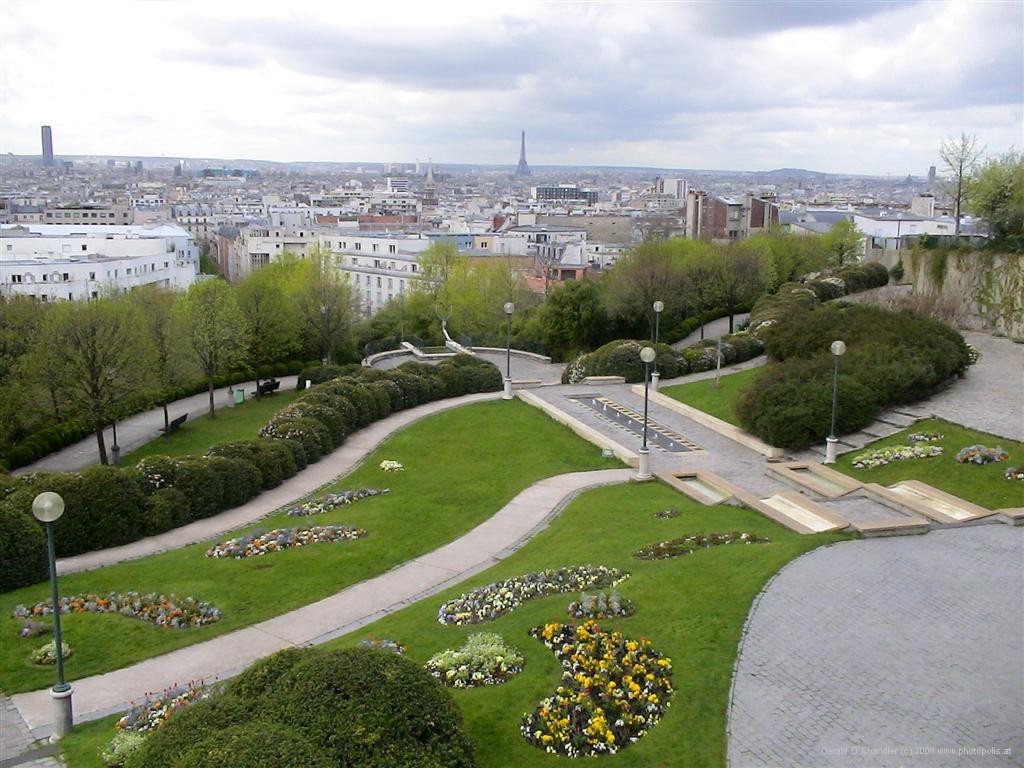
Parc de Belleville with view of Central Paris |
From Belleville to the center of Paris is only four kilometers. Not far today, but in the days when most people walked if they went anywhere, it was far enough for identities to be distinct. At the end of the 19th century Paris's population had grown so much and transportation links improved so much that Belleville, like a number of other outlying communities, was integrated into the greater Paris municipality.
From where we stayed on rue de la Mare it was only a five minute walk to the Parc de Belleville. There one could almost simultaneously experience Belleville's past and present. The first thing one noticed was the expansive view of Paris: Eiffel Tower so obvious, and with some scrutiny the Opera, Notre Dame, and a dozen other landmarks. An observant walk around the upper slopes of the park brings you to the vineyard, small now, but a reminder that once these "côtes" were productive agricultural land.
Once Gerry discovered there was a library just opposite the park and that he could borrow audio books he was going through the park every third day. The trees and flowers (and even people) were a delight as spring passed into early summer.
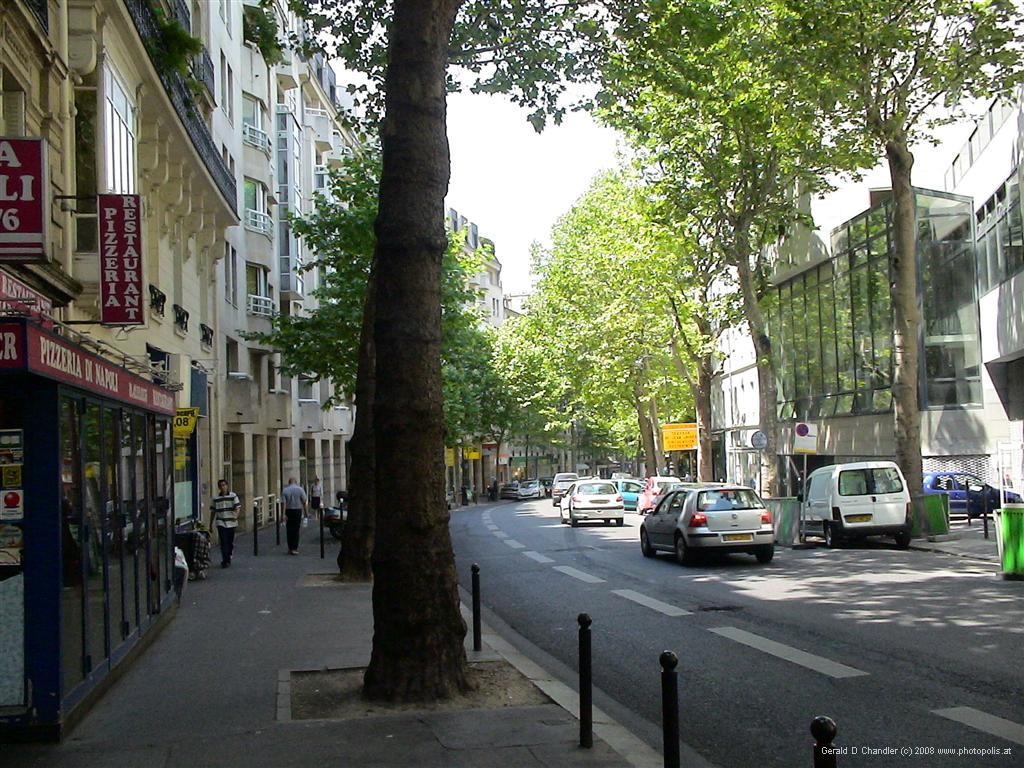
Rue Simon Bolivar, Belleville |

Rue des Pyrenées |
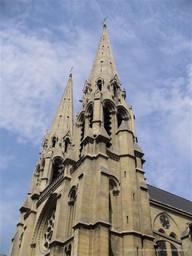
Eglise St. Jean-Baptiste, Belleville |
Unlike other great cities Paris has no center: nowhere is as dense as Manhattan and nowhere is as low rise as outer Brooklyn or Queens. What is true of the whole is true of the part: Belleville has no center. Shops and animation abound; they are found everywhere.
Nonetheless, if we define the center to be where the greatest concentration of transportation is and thus where there are the most people coming and going, then it is where rue de Belleville, Blvd Simon Bolivar, and rue des Pyrenées cross each other. The "Jordan" and "Belleville" metro stops on line 11 define the limits of this area. Just opposite the Jordan metro stands the impressive Eglise St. Jean-Baptiste, once a great magnet for the people of the area when they were poorer and looked to the church rather than the welfare state.

Birth place of Edith Piaf on rue de Belleville |
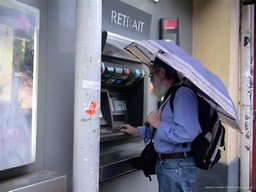
ATM/Distributor de Billets |
If anyone outside of Paris has heard of Belleville it is as likely because Edith Piaf was born there, on the rue de Belleville, as for any other reason. A small plaque marks the spot, just before the Metro entrance. The plaque reads: "The steps to this house witnessed the birth on the 19th of December, 1915 in the greatest poverty of Edith Piaf, whose voice was later to take the world by storm. " We cannot vouch for the truth of the story, except for the part about her voice. Although we walked by often, we could easily forget where it was and have to search to show it to visitors.
Besides the rue de Belleville, which we rode along on the number 26 bus that so often took us to the Gare de l'Est and farther and to shop at Lidl and where we found a podiatrist when we needed one, the other place we often passed was rue des Pyrenees, which we visited almost daily as we went to and came from the Metro, when we needed cash, or wanted to buy a newspaper. We also found both a notary and a general doctor there.
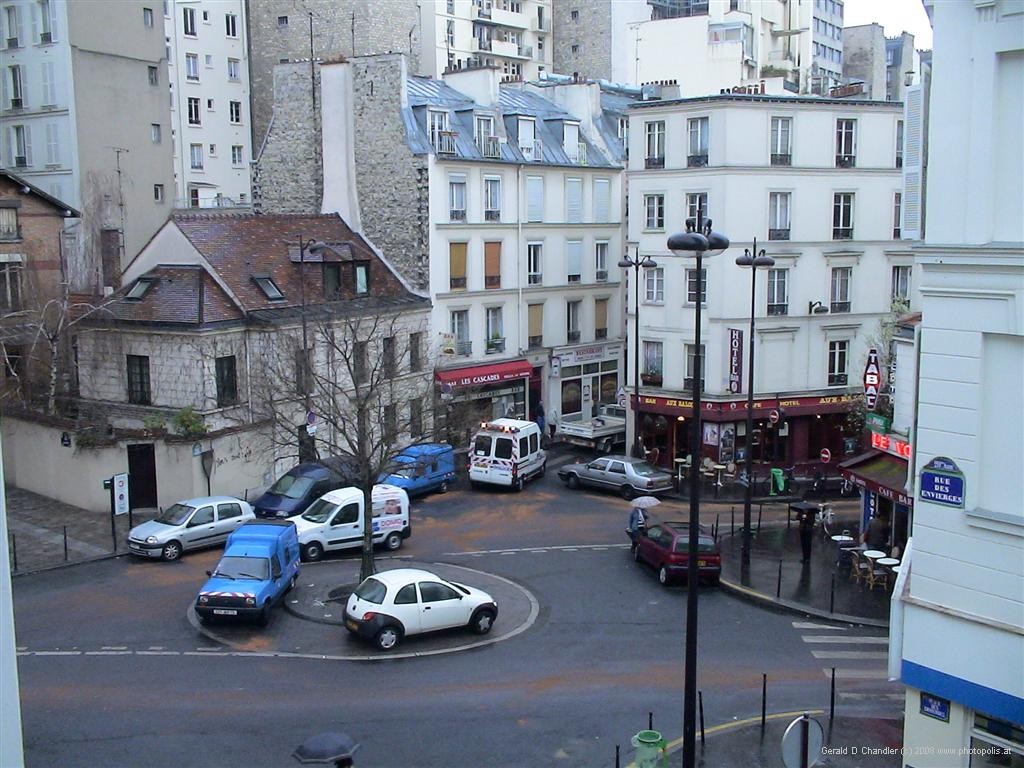
Square on rue de la Mare |
Many corners of Belleville have retained traces of its past. The square just below our apartment has much the same appearance as it did one hundred years ago. This time, as in 1999, we looked out our window one day to see an episode of a television serial being recorded there. We think our little square is such a favorite that at least once every three or four months a production takes place there.
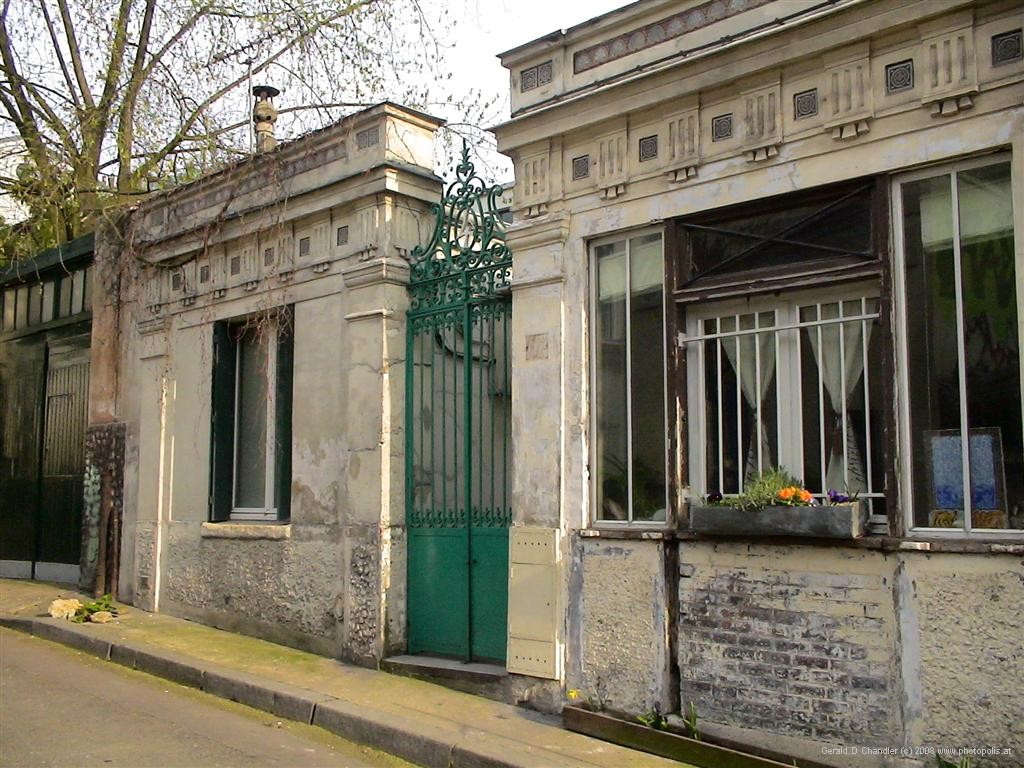
A remnant of the past |
There are traces of older, farther ago times: we've already mentioned the vineyards in Parc de Belleville. Other examples are small stone houses called "regards", some built as early as the 16th century, as part of the Paris water supply. Here and there short cul-de-sacs lead to little communities that belong to another era; their residents fight hard to preserve them.

Crane on rue de la Mare |
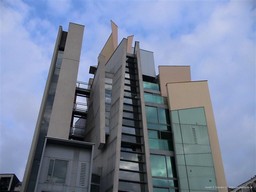
Modern High rise |
Perhaps we emphasize the past too much, although that is the most interesting. Over the last 50 years there has been much construction too. Sometimes, just a few buildings are taken down and replaced by ones with similar foot prints. That was happening just across the street from us: When we arrived the building we had seen in 1999 was gone; toward the end of our three months we had the fun of seeing a giant crane being installed. In the next year another increment of change will work its way out of the deep basement.
Besides the new individual building, large estates have also gone up. These hardly fit in with the image of Hausmann Paris that we all have. Some of these estates are pretty tame; covered in unremarkable brick work. Some are on the cutting edge of modern architecture; pleasant or regrettable as that may be.
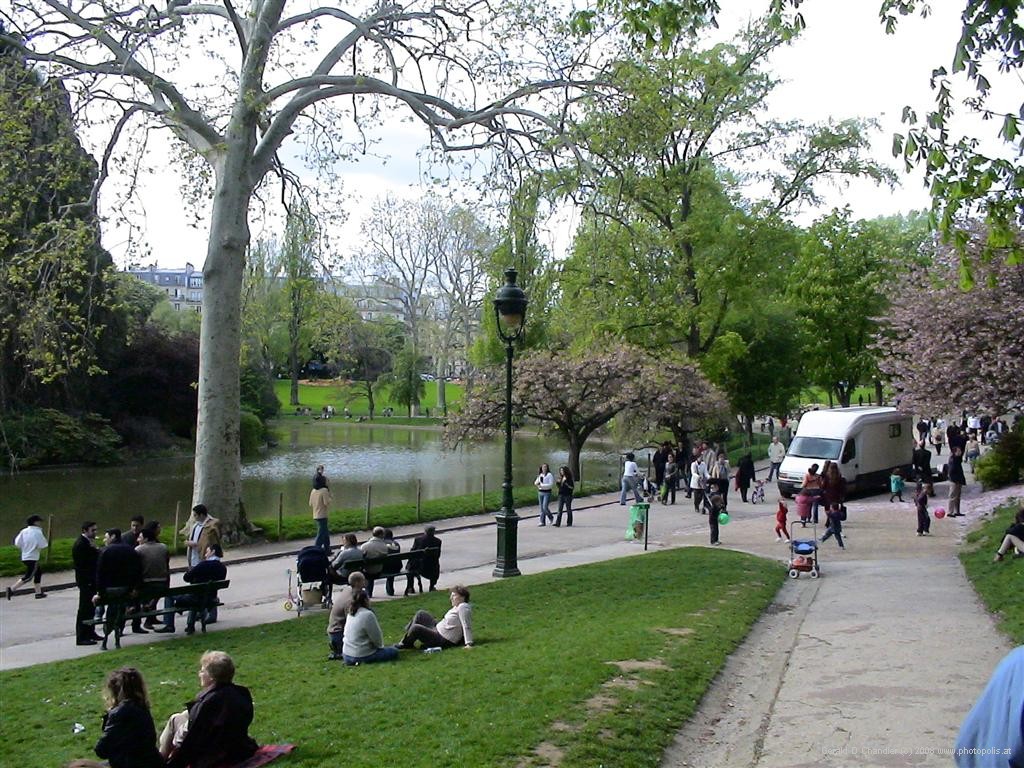
Late Spring, Buttes de Chaumont Park |

Flowering Shrub in Buttes de Chaumont Park |
We lived close to another bigger park, that of the Buttes de Chaumont. The Buttes de Chaumont was once a gypsum mine and a mini-railroad center; at the turn of the 20th century it was landscaped into the largest intra-muros park in Paris. In some respects it plays the role in Paris of New York's central park. All around it homes with park views are expensive. Crowds sunbathe and there is a merry-go-round. Unlike New York (we think) you can get crepes at the food stand.

Bird in Wall, Belleville |
We weren't the only ones who enjoyed spring in Belleville.

A quiet street in old Belleville |